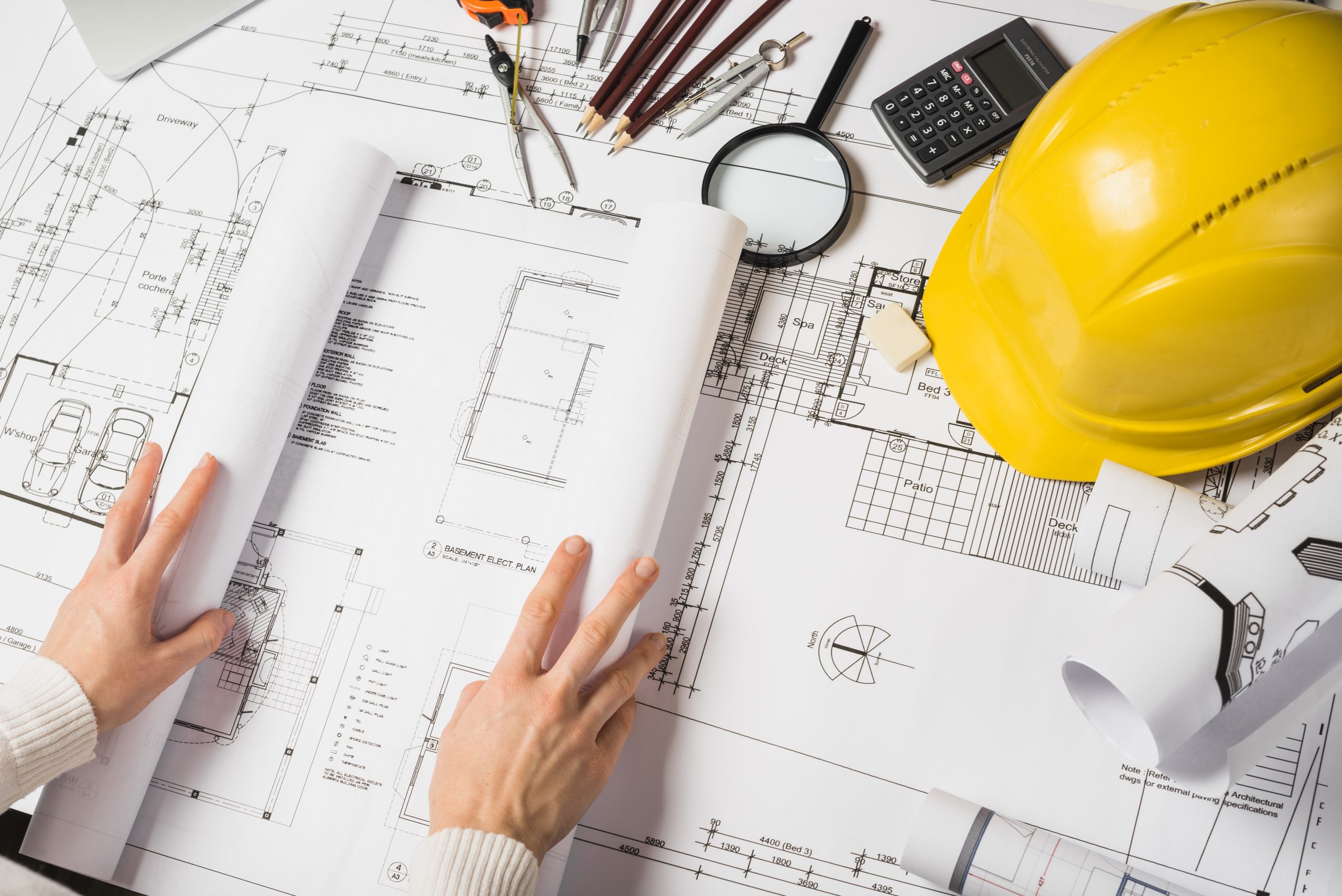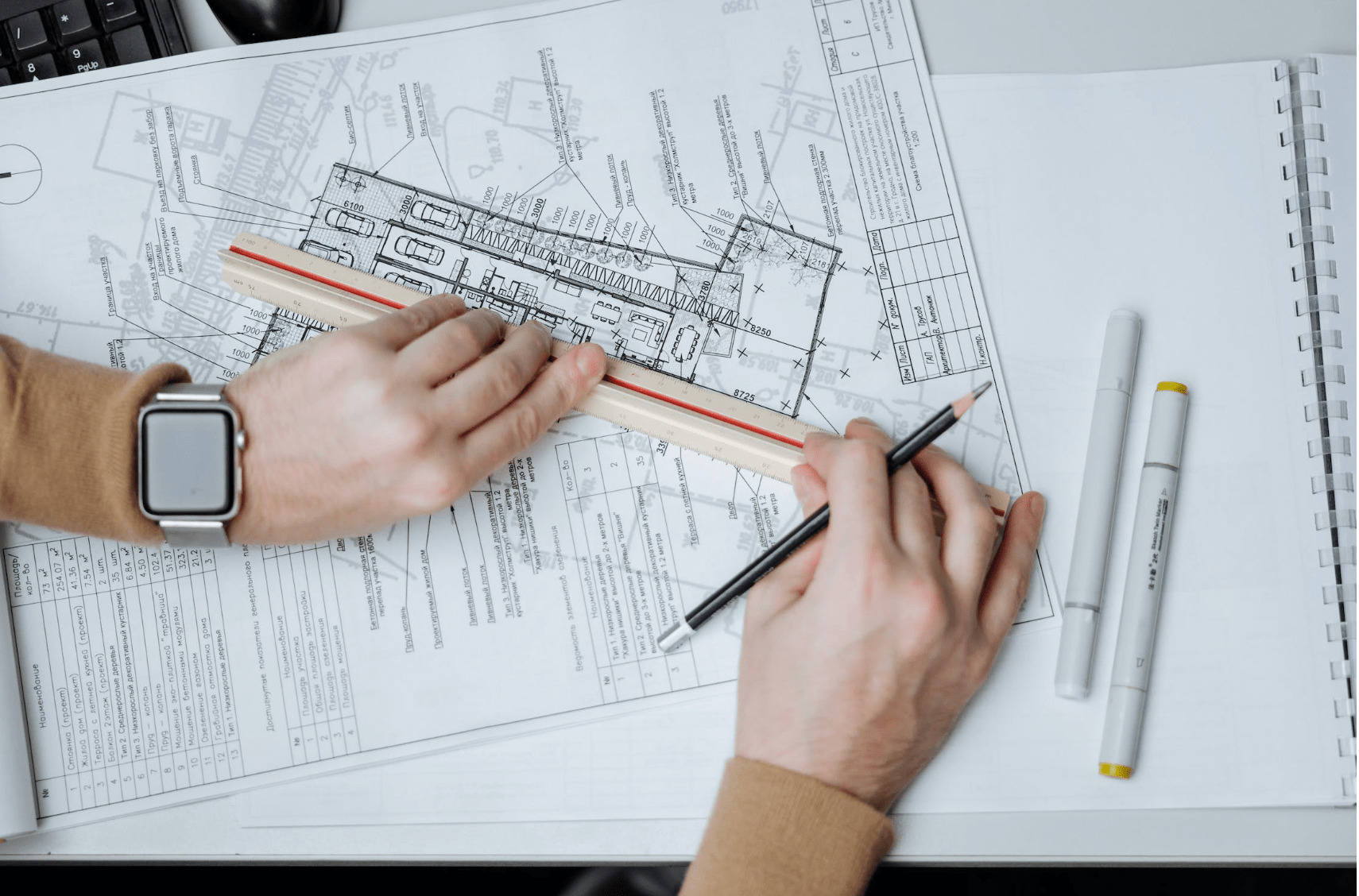Architect Checklist for Upcoming Commercial Projects
Architect Checklist for Upcoming Commercial Projects
Blog Article
Recognizing the Diverse Profession Paths Available for Aspiring Architect
As a hopeful Architect, you have a globe of profession courses waiting for you. Each course offers special obstacles and possibilities to use your creativity and technical expertise. Whether you're drawn to standard style or the nuances of lasting layout, there's a particular niche that aligns with your rate of interests. Understanding these varied options can shape your expert journey, but which direction will you choose to check out initially?
Standard Style: Creating Structures and buildings
Standard architecture focuses on making buildings and structures that mix functionality with aesthetic allure. Your designs can show social heritage, showcasing local customs while satisfying contemporary requirements.
You'll establish abilities in drafting, model-making, and site analysis, enabling you to picture and interact your ideas efficiently. Engaging with customers, you'll require to understand their vision and translate it right into possible styles.
Furthermore, building codes and sustainability techniques are vital in your job, ensuring your structures are environmentally friendly and secure. As you grow in your profession, you'll locate chances in household, business, or even reconstruction jobs, each offering one-of-a-kind difficulties. Welcoming standard design leads the way for a fulfilling job that pays homage to the past while forming the future.
Urban Preparation: Forming Neighborhoods and Public Spaces
As a hopeful Architect, you can play an important role as a city planner, transforming how communities communicate and work. By employing area engagement strategies, you'll assure that locals have a voice in shaping their environment. Plus, integrating lasting design principles will aid produce rooms that not only fulfill today's requirements yet likewise protect the future.
Function of Urban Planners
While numerous may believe of designers as the sole dreamers behind structures, urban organizers play an important role in forming the broader landscape of neighborhoods and public rooms. By teaming up with different stakeholders, you'll assist develop parks, transportation systems, and residential locations that advertise social communication and availability. Your experience in spatial layout and community characteristics permits you to picture future development while maintaining cultural heritage.
Area Interaction Approaches
Reliable area involvement methods are crucial for city coordinators to assure that the voices of citizens are listened to and valued in the planning process. To cultivate significant discussion, you should focus on open online forums and workshops where neighborhood participants can express their concepts and concerns. Use studies and social networks to reach a more comprehensive target market, making sure varied viewpoints are consisted of. Collaborating with regional companies can boost trust fund and promote much deeper links. It is necessary to give clear information regarding suggested projects and decision-making processes, permitting homeowners to feel informed and empowered. By actively listening and integrating feedback, you'll create rooms that reflect the community's needs, eventually causing even more lasting and effective urban atmospheres. Welcome openness and constant discussion for lasting effect.
Lasting Design Concepts
When making metropolitan rooms, incorporating lasting layout concepts is essential for creating atmospheres that prosper both environmentally and socially. You need to start by concentrating on energy performance, utilizing materials that decrease waste and promote recycling. Take into consideration integrating eco-friendly spaces, like gardens and parks, to enhance biodiversity and boost air top quality. Promoting walkability and public transportation can decrease dependence on cars and trucks, promoting a much healthier area.
Creating with water preservation in mind is likewise key-- think of rain gardens and permeable surface areas to handle stormwater. Entailing community participants during the preparation process warranties that the rooms you develop fulfill their requirements and urge social interaction. By welcoming these concepts, you'll add to dynamic, lasting city landscapes that profit everyone.

Landscape Style: Creating Sustainable Exterior Settings
As you discover landscape design, you'll discover essential layout principles that produce useful and gorgeous outside spaces. Lasting practices play a vital role in guaranteeing these settings prosper while decreasing ecological effect. Plus, you'll locate a range of occupation opportunities that enable you to make a genuine difference in how people interact with nature.
Style Principles in Landscape
Understanding layout concepts in landscape style is vital for creating lasting outside atmospheres that balance with nature. You'll require to ponder aspects like proportion, scale, and equilibrium to guarantee your layouts feel cohesive and inviting. Integrating indigenous plants not only boosts biodiversity yet additionally lowers water usage, making your landscape durable. Assume concerning the flow of room and exactly how people engage with it; paths and seating locations should invite exploration and relaxation. Furthermore, pay focus to seasonal changes, designing with products that complement the surroundings year-round (Architect). By prioritizing sustainability and appearances, you can create outdoor areas that enhance the community and promote well-being. Embracing these principles will set a strong foundation for your career in landscape architecture.
Sustainable Practices Overview
Lasting techniques in landscape architecture not only concentrate on visual appeals however likewise prioritize environmental wellness and resource preservation. By incorporating native plants, you boost biodiversity and minimize the requirement for chemical plant foods and chemicals. Carrying out reliable irrigation systems assists conserve water and reduces runoff, safeguarding neighboring ecological communities. You can develop spaces that advertise soil wellness, such as using natural products and practicing permaculture principles. Furthermore, integrating eco-friendly facilities, like rain yards and porous pavements, aids in stormwater administration and lowers metropolitan warmth. When you produce exterior environments with sustainability in mind, you add to a healthier earth and provide areas that promote neighborhood link. Ultimately, these methods ensure your layouts benefit both individuals and the environment for years ahead.
Profession Opportunities Expedition
With a strong structure in sustainable techniques, landscape architecture supplies a range of profession courses that enable you to make a purposeful impact on the environment. Urban planners typically team up with landscape architects to produce green areas in urban setups, improving city livability. If you're passionate about education, consider becoming a landscape Website style teacher, motivating future generations.
Lasting Design: Concentrating On Eco-Friendly Practices
As you discover your occupation in architecture, welcoming green methods can set you apart in a competitive area. Sustainable layout concentrates on producing structures that decrease ecological effect while enhancing resident health. By including sustainable products, energy-efficient systems, and lasting building techniques, you'll contribute to a greener future.
Beginning by getting expertise of environment-friendly certifications like LEED or BREEAM, which can bolster your credentials. Think about just how all-natural light, ventilation, and thermal performance can optimize layout. Work together with designers and environmental professionals to innovate services that minimize waste and preserve sources.
Don't neglect the significance of neighborhood participation-- interesting neighborhood stakeholders can motivate designs that integrate with the environment. As customers progressively focus on sustainability, your proficiency in environment-friendly methods will certainly not only draw in jobs however likewise satisfy your interest for accountable architecture. Embrace this important element of the occupation, and watch your profession thrive.
Historic Preservation: Protecting and Restoring Social Heritage
While you start on your building journey, think about the important role of historic conservation in preserving our cultural heritage. This area concentrates on the security and remediation of considerable buildings, websites, and structures that tell the stories of our past. By engaging in historic preservation, you'll help guard the architectural heritage that forms community identification.
As a historical conservation Architect, you'll assess historical relevance and analyze the condition of frameworks. You'll work closely with historians and conservationists to assure authentic reconstruction strategies are used. This job course allows you to blend creativity with research, allowing you to develop remedies that appreciate original products and craftsmanship.
Your job not just adds to sustainability by reusing existing structures but additionally cultivates a feeling of pride within neighborhoods. Accepting this course will assist you become a guardian of history, protecting the tales and looks that enhance our lives.
Interior Style: Enhancing Indoor Spaces
Historic preservation and interior design both share a dedication to boosting the built atmosphere, but they concentrate on different elements. While historic conservation emphasizes preserving a structure's social and historic value, indoor style zeroes in on maximizing interior spaces for capability and aesthetics.
As an aspiring Architect, you'll discover that interior design permits you to mix creativity with technical skills. You'll design rooms that not just look excellent but additionally advertise comfort and effectiveness. This field includes comprehending exactly how light, color, and materials communicate within a space, impacting mood and functionality.
You'll deal with numerous tasks, from residential homes to commercial offices, ensuring that each environment satisfies the requirements of its passengers. By focusing on individual experience, you can transform interiors right into motivating and functional rooms, making a significant effect on exactly how people communicate with their surroundings. Embrace the possibility to boost indoor atmospheres and shape the means individuals work and live.
Industrial Layout: Merging Performance With Looks
Industrial design plays an important role in creating products that flawlessly blend visual appeals with capability, making sure that what you use daily is not just visually enticing however also functional. As a hopeful Architect, you can immerse on your own in this field, concentrating on developing everything from furnishings to consumer electronic devices. Your work entails comprehending user requirements, materials, and producing processes, enabling you to produce ingenious options that boost everyday experiences.
In commercial design, you'll frequently team up with producers, marketing experts, and engineers, guaranteeing that your layouts are not only stunning however additionally feasible. You'll find out to balance type and feature, focusing on use without sacrificing style. By sharpening your skills in mapping out, 3D modeling, and prototyping, you'll be well-equipped to bring your concepts to life. This career course supplies a vibrant setting where imagination satisfies practicality, making it a gratifying option for engineers thinking about shaping the products of tomorrow.
Frequently Asked Questions
What Educational Certifications Do I Need to Become an Engineer?
To end up being a designer, you'll need a specialist degree in architecture, commonly a Bachelor's or Master's. Furthermore, you'll have to finish an internship and pass the Architect Registration Exam to practice legitimately.
Exist Accreditation Requirements for Various Architectural Occupation Paths?
Yes, there're accreditation requirements for numerous architectural courses. Architect. You'll need to pass examinations, complete internships, and often seek specialized training, depending on your picked webpage focus, like landscape design, city design, or historic preservation
What Software Skills Are Crucial for Designers Today?

Exactly How Can I Gain Practical Experience While Studying Style?
You can get useful experience by interning at architectural companies, joining layout competitions, offering for community tasks, or working together with classmates on real-world assignments. These opportunities boost your index skills and construct beneficial connections in the sector.
What Task Opportunities Exist Outdoors Traditional Design Firms?
You can discover different job chances outside typical architecture companies, like city planning, interior decoration, landscape design, building and construction management, realty growth, and even duties in sustainability consulting. Each offers one-of-a-kind challenges and benefits.
Whether you're attracted to typical architecture or the subtleties of lasting design, there's a specific niche that straightens with your passions.When designing metropolitan areas, incorporating sustainable design principles is vital for developing environments that flourish both environmentally and socially.As you discover landscape style, you'll uncover important style principles that create beautiful and functional exterior areas.Recognizing layout concepts in landscape style is essential for creating sustainable outside atmospheres that balance with nature.In commercial style, you'll typically collaborate with marketing professionals, manufacturers, and designers, guaranteeing that your designs are not just attractive however likewise practical.
Report this page